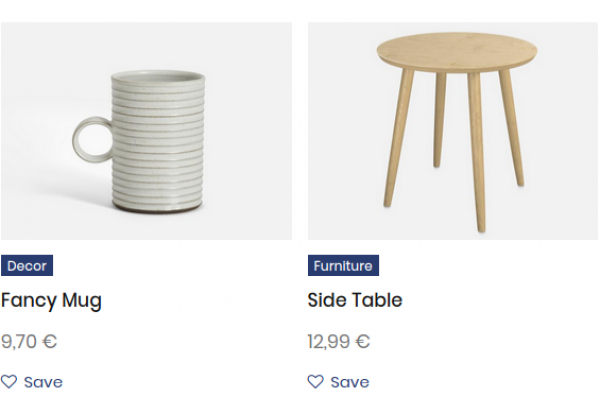How do you build an MVP marketplace in 2022? Here’s how to set up a no-code Minimum Viable Platform in the easiest and fastest way.
Build your online marketplace today!
Benefit from a 7-day free trial, with no obligation or payment card
How do you build a Minimum Viable Platform (MVP marketplace)?
Good question. An MVP platform is a crucial part of building a successful marketplace. And today, you learn how to set up your own minimum viable platform.
Want to learn more? Read on.

Source: Pexels
What is an MVP marketplace?
An MPV is one of the most important parts of building a marketplace.
It helps validate and develop the business idea so that you can be sure that you’re building a successful business (and not wasting time on the wrong thing).
But first things first:
Why should you even build a marketplace business?
Let’s find out.
Why should you build a marketplace?
Here’s the thing:
A marketplace business can help you build a profitable and scalable business.
Some of the world’s biggest businesses are marketplace businesses. Take Amazon (the most valuable company in the world) and Airbnb (a multi-billion dollar business).
Your marketplace works as a meeting point for sellers and buyers in your market. As the marketplace owner, you create demand and supply on the marketplace platform. But you usually don’t need to worry about things like shipping costs, upkeep, or inventory. And that’s what makes marketplaces so scalable.
How do you then find your marketplace idea? Here’s our guide on what makes a great marketplace idea -- along with seven ideas you can use today.
Now you know why a marketplace business is a great business model.
So, how do you get started?
That’s where an MVP marketplace comes in, your first marketplace prototype.
Why do you need an MVP?
What is an MVP marketplace?
An MVP is the minimum version of your marketplace business.
It includes just enough features so that early users can provide feedback. Based on this feedback, you then develop the marketplace. Thanks to using an MVP, you avoid doing unnecessary work. You also find faults in your product faster than if you don’t set up an MVP.
For example, take Airbnb. The company was founded after the founders rented out their living room to people who attended a design conference in San Francisco back in 2007.
The first version of the site was called airbedandbreakfast.com.
The platform was positioned as a networking service for conference attendees.
But thanks to feedback and usage patterns, the founders soon changed the name to Airbnb and removed the networking part of the business. Travelers could now rent any type of lodging.
And suddenly, they had a booming marketplace platform that to this day is leading the travel apartment rental industry.

See how this helped Airbnb launch a successful marketplace much faster than if they would have stubbornly stuck with their initial idea (air mattresses for people who travel to conferences)?
In the same way, you can use your MVP to validate and refine your marketplace idea.
The result? A much more profitable business.
How do you build an MVP?
Now you know why you need an MVP. But how do you create one in the fastest and simplest way possible?
There are two routes you can take:
You can either build it yourself or you can use a no-code marketplace website builder.
Building your own marketplace vs using a marketplace SaaS
The first alternative means that you can make the marketplace look exactly like you want it to look. But on the other hand, developing your own marketplace will come with a $20,000 price tag -- not to mention the additional price for any changes you make to the MVP based on user feedback.
Plus, website development takes a long time. You won’t get up and running as fast as you could.
Another option is to use a no-code marketplace website builder.
Most marketplace website builders have drag-and-drop features that let you get started in a few hours.
You don’t need any coding skills. That’s why this tends to be the fastest and most cost-effective alternative out there.
But how do you find a platform to build your MVP?
Our own platform, Kreezalid, helps you get started.
We offer all of the marketplace features you need (from user-profiles and listings to design features). And if you want to develop your own features, you can customize your marketplace.
You can use Kreezalid for different types of marketplaces -- physical products, rentals, services, and digital products.
And here, you can read more about our customers and why they chose to build their marketplaces with Kreezalid.
Build and launch your MVP
The most important features of an MVP are:
- User accounts
- Listings
- A way to pay and get paid
To get up and running as fast as possible, set up a bare-bones website.
Use one of Kreezalid’s themes.

Then, use the website builder to create a platform with must-have features.
And that’s it -- you’re ready to launch your marketplace MVP.
How do you test your MVP?
The next step is to test your Minimum Viable Platform.
To do that, you need to get your first users, who can then give you feedback on your platform.
That’s why you should start by defining your early adopters.
Who are your early adopters?
Early adopters are people who are the most eager to try out your platform.
Their feedback will be invaluable for developing your marketplace.
And the approach you’ll want to take is to listen to them and make small improvements based on those insights. Then, you listen to feedback again, make improvements, and continue until you have a proven marketplace idea.
How do you reach your early adopters?
Your early adopters are part of your target audience. So, if you’re building a marketplace for childrens’ second-hand designer clothing, your early adopters are parents who are the most eager to buy high-end second-hand clothing for their children, as well as parents who already own such clothing and want to get rid of it.
To get them to sign up for your platform, go to where your audience(s) are hanging out.
In the example above, this could be Facebook groups, online forums, or even local events for parents.
For the supplier side, you will want to get a good number of sellers so that your marketplace is actually useful for buyers. Again, this might be Facebook groups (for example, groups where people are selling used children’s clothes) or other online marketplaces.
How do you measure the success of your MVP?
When you launch your marketplace, you need to define what it is you want to learn.
In other words, you need to define your assumptions and the Key Performance Indicators (KPIs) of your marketplace business.
Ask yourself:
- What will determine the success or failure of your MVP?
- What assumptions are you trying to validate?
Here you can read more about marketplace metrics to track. For a functioning business, you need to keep an eye on the cost of acquiring new users, your revenue and profit rates, and the lifetime value of your users.
Want to get started today?
There you have it. Now you know how to build an MVP marketplace.
The best part? You can do it in a simple way without any coding and launch your MVP platform already today.
At Kreezalid, we offer a 14-day free trial. Get started today!

